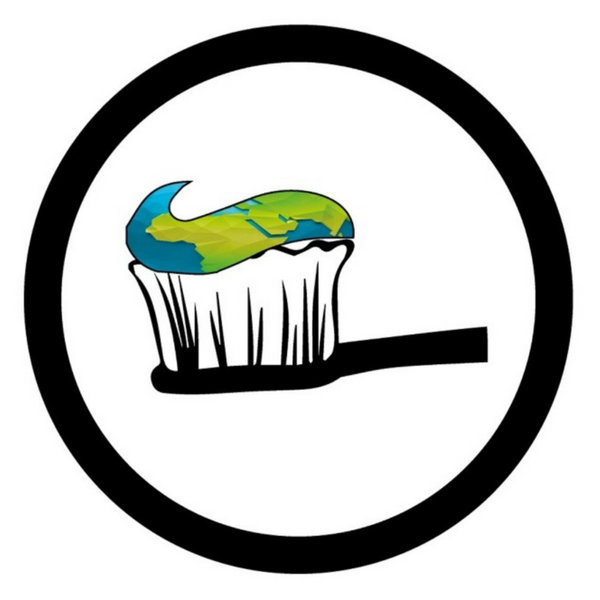The simple answer is yes - gum disease can be prevented with a good oral hygiene routine and regular dentist check-ups. But before we look at how to prevent gum disease, let's understand what it is.
What Is Gum Disease?
In short - gum disease (also known as gingivitis) is a common infection which causes the gums to bleed or become red, swollen and sore. As well as oral pain, gum disease may also result in bad breath (leaving you with foul taste in your mouth), shrinking gums and even tooth loss.
The main cause of gum disease is poor oral hygiene from the buildup of plaque on the teeth (a white sticky substance containing bacteria). While some bacteria in plaque are harmless, some are harmful for the health of your gums. If you don't regularly brush your teeth, the plaque will remain on your teeth, which can build up and irritate your gums. This can therefore lead to redness with bleeding, swelling and soreness.
What Happens if Gum Disease Is Left Untreated?
If gum disease is left untreated, it will progress into periodontitis, which is essentially a more severe stage of gum disease.
The infection and pockets deepen while eating away at your jaw until your teeth become loose and fall out. As gum disease progresses, the gums begin to recede or separate from the teeth and the jaw bone and form periodontal pockets. This can lead to changes in the bite and pain while chewing or biting.
But tooth loss isn’t the only thing that happens if periodontitis is left untreated. It can also lead to heart disease, arthritis, and many other complications
How to Prevent Gum Disease
Fortunately, there are a number of things you can do to prevent (and treat) gum disease if swift action is taken, such as: following a three-step oral routine, using expert approved dental products and regularly replacing your toothbrush.
1. Follow The Three-Step Oral Care Routine
As mentioned above, gum disease typically strikes when we don’t look after our oral hygiene. If you have early-stage gum disease, the best way you can treat it (and prevent it getting worse), is to simply ensure your dental routine includes the three-step regimen: brush, floss, and rinse.
Brush
To correctly brush your teeth, place your toothbrush at a 45° angle against your gums and brush each tooth approx. 15 to 20 times. Ensure you use short strokes, moving the brush gently around your mouth.
Remember, the outer tooth surfaces should be brushed using back-and-forth strokes, whereas the inner upper-front teeth should be brushed vertically against them using downward strokes. For your lower inside teeth, use upward strokes.
Floss
Flossing works to remove plaque and tiny food particles that get stuck between your teeth and under your gums.
To floss correctly, grab about 18 inches of floss and hold it tightly with two hands, between your thumbs and forefingers. Place it between your teeth and gently slide it up and down. Gently rub the side of the tooth and once it reaches the gum line, curve it around 1 tooth. Repeat for every tooth then discard once used.
Rinse
Rinsing with mouthwash can help reduce plaque and tartar buildup as it kills bacteria in those hard-to-reach places below the gums, and eliminates bacteria on non-tooth oral surfaces such as the tongue and cheeks.
To rinse, pour your oral rinse of choice into the cup provided with the product or a plastic measuring cup. Empty the cup into your mouth and swish it around with the force of your mouth. Bonus points if you can gargle for 30 seconds.
2. Make Regular Trips to the Dentist
If an upgraded oral hygiene routine isn’t helping reverse gum disease symptoms, chances are the plaque has developed into tartar, which can only be removed with professional cleaning by a dentist.
We recommend scheduling regular 6-months dental visits for check-ups and professional cleaning to clear your mouth of tartar.
3. Use a Dentist Approved Fluoride Toothpaste
It’s essential that the toothpaste you're using to brush is dentist approved and contains fluoride, such as the Brush Fresh zero waste toothpaste tablets.
Not only does fluoride remove tartar, reduce plaque and protect teeth, but it can also attract strengthening minerals (such as calcium) to the area. Calcium is great for our bones, helps repair tooth damage and keeps our teeth healthy and strong.
Brush Fresh Toothpaste Tablets
These tubeless, natural & vegan toothpaste tablets are perfect for everyday use, travel (hand luggage friendly & leak proof) and most of all to better your oral health! This product shows that we can be both healthy for ourselves, and healthy to the environment.
Learn how to use toothpaste tablets here.

4. Replace Your Toothbrush Regularly
Dentists recommend that you replace your toothbrush every 3-4 months, or earlier if it begins to become worn or frayed. It is also suggested to get a new toothbrush after you have had a cold, strep throat, or similar illness. This prevents the risk of bacteria and germs spreading.
Eco-Friendly Bamboo Toothbrushes
Our bamboo toothbrushes are a great choice if you’re looking for an effective brushing routine, without harming the environment. Some of its key features include:
- BPA free
- Antimicrobial
- Blunted bristle tips ensure they do not cause tooth wear and abrasion
- Cruelty free
- Fully biodegradable
- Sustainable and ethically sourced

Brush Fresh Co. is founded and run by a group of UK-based dentists, who specialise in environmentally-friendly and sustainable dental products. From biodegradable bamboo toothbrushes to zero waste toothbrush tablets, our product range has been designed to put both your dental health and the environment first. For more information and dental care advice, head over to our blog page or get in contact with us here.
Written by Kate, on behalf of Brush Fresh Co - the UK's Dental Experts Providing eco-friendly dental care.

